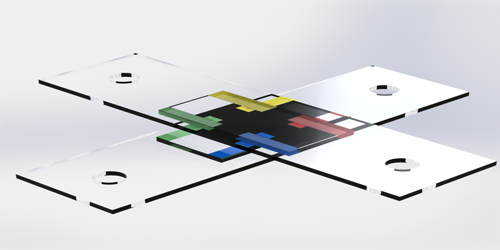Thermal Radiation Gets a Boost
When two objects at different temperatures are placed within nanometers of each other, the thermal transfer of energy between them can exceed that expected for standard blackbodies by many orders of magnitude. This effect, which could be beneficial to many energy applications, results from the near-field coupling of the electromagnetic waves radiated by the objects. But, so far, experimental demonstrations have used objects too small to have practical applications. Now, Keunhan Park, of the University of Utah in Salt Lake City, and colleagues have observed the effect with millimeter-sized plates of quartz.
Testing this near-field radiation-transfer enhancement in experiments is tricky. The two objects must be positioned in a vacuum with nanometer precision, their surfaces must be exactly parallel, and no heat should escape by other means—all while maintaining a significant temperature difference between the plates. The team designed a setup that meets all these requirements. They placed two quartz plates, mm in size, at separations of 200 and 1200 nm and created temperature differences of up to 156 K. At the smallest separation, Park and colleagues observed that the thermal radiation transfer between the plates was 45 times greater than that expected for blackbody radiation.
A theoretical analysis indicated that the boost comes mostly from surface phonon polaritons—mixed excitations that are a combination of electromagnetic waves with lattice vibrations. At close separations, the polaritons in the two plates couple to each other and aid the transfer of thermal energy. The results suggest that materials hosting phonon polaritons could be used to enhance energy transport in solid-state heat engines or to remove heat from nanodevices.
This research is published in Physical Review Letters.
–Christopher Crockett
Christopher Crockett is a freelance writer based in Montgomery, Alabama.





